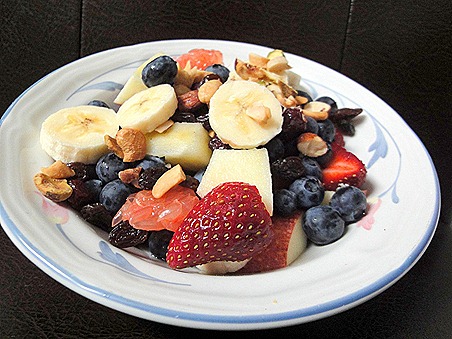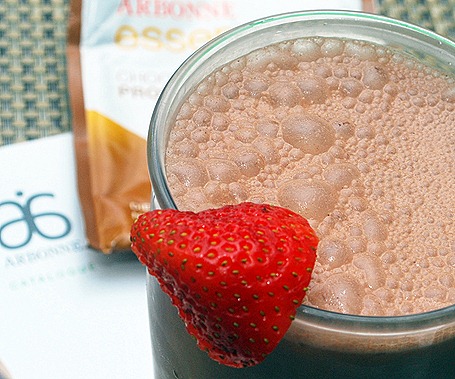Does it seem that some routes you take while running seem shorter than other routes even though they are the same distance?
The other morning, Shane and I ran a few miles out, turned around and ran the same route back. It wasn’t too far from home, basically half a horse shoe from our house.
If I completed the same distance but ran zig-zag around the college, up one road, down another then came back in a straight line, it would seem longer.
Do you think it’s a comfort zone thing? Being closer to home seems that we don’t go as far?
My running this week was burdensome to say the least. I’ve been trying to crank up the miles and it finally wore me down. Sleep has been hard to come by. Because of the lack of sleep, I skipped out on my eleven miler Tuesday. Managed to eke out an extra mile on Wednesday for 7 miles. Thursday, woke up well before my alarm and got on the treadmill at… hold your breath…3:30AM! AAHHH! then ran my long run for the week of 17 miles. For about an hour, I kept telling myself it was just crazy being on that “hamster wheel” at 3:30AM. After giving up on the crazy thoughts and accepting that I was deeply disturbed, I started urging myself on and turned the thoughts to just finishing my run.
Friday my body dictates how far I run. I don’t set the alarm and if I get up early, I’ll go a little farther. BUT I WON’T GET UP AT 3:30AM! (unless it’s a weekend that Ted has an out of town Triathlon or I have a marathon – those events are justifiably pre-dawn awakenings). This Friday morning my body only wanted 3.6 miles.
Saturday is the Newport Beer -n- Chili run. Ted wants to do the run, but will most likely stick to a 5K or take it really slow for the 10K. I’m not in a “race pace” kind of mood, especially since the course offers one big hill. It’s a great race, friendly runners, good chili (even Vegetarian chili) and the 26.2 Mini Loaves will be given out to about 72 runners. Sorry I couldn’t make more. ![]()
It should be a good weekend. Mild weather, good friends and, on Sunday, a Super bowl party! YAY!
Healthy Foods and Drinks This Week:
Massive bowl of fruit sprinkled with a few nuts and raisins:
Delicious Arbonne Shakes:
The following was copied from my friend Gaetan Tremblay’s post “Amino Acids In Arbonne Essentials Shakes.” Please see his post for the complete Arbonne Shake Amino Acid Profile.
Amino acids are the building blocks of the proteins that are found in our bodies. The human body can produce 12 of its 20 amino acids, but the other 8, which are called Essential Amino Acids can only be obtained by eating the right foods or using a proper Vitamin/Mineral Shake like the Arbonne Essentials Vitamin/Mineral Shake. When we eat food such as meat, fish, and cereals or indulge in a delicious Arbonne shake, the proteins contained in it are first degraded to the 20 kinds of amino acids, and then reassembled into proteins in the body.
When the body doesn’t get enough of these essential compounds, it will begin to break down its proteins in search of the nutrients it needs. Since the body stores fat and starch, but not amino acids, it is necessary for individuals to consume all the required essential nutrients daily.
Below are the Amino Acid Content per serving of the Arbonne Essentials Vitamin/Mineral Shakes (And what each Amino Acid is used for in your body).
1. Alanine – 880 mg – protects the cells from damage by preventing the buildup of toxic substances that are released into the muscle cells when protein is broken down quickly to meet energy needs.
2. Arginine – 1,820 mg – Arginine helps strengthen the immune system by increasing the production of T-cells from the thymus gland.
3. Asparagine – Asparagine is needed to maintain balance of the central nervous system, as it is an essential component of proteins that are involved with equilibrium, signaling, neuron development and electrical transmission across nerve endings.
4. Aspartic Acid – 2,500 mg – Aspartic Acid is known for its treatment of chronic fatigue syndrome due to the role it plays in generating cellular energy. It helps keep the mind sharp and focused by increasing concentrations of NADH in the brain (an active coenzyme form of Vitamin B3 called Nicotinamide Adenine Dinucleotide) which boosts the production of neurotransmitters and chemicals needed for normal mental functioning).
5. Cysteine – 220 mg – Cysteine functions as a powerful antioxidant. It has been used to treat rheumatoid arthritis and hardening of the arteries.
6. Glutamic Acid – 4,006 mg – Glutamic Acid is important in the metabolism of both sugars and fats, and helps in the transportation of potassium into the spinal fluid and across blood-brain barrier.
7. Glutamine– Known as a superb brain fuel. Glutamine is also an important source of energy for the nervous system. If the brain is not receiving enough glucose, it increases Glutamine metabolism for energy. Glutamine users often report more energy, and less tiredness.
8. Glycine – 820 mg– Glycine helps prevent the breakdown of muscle by increasing the levels of Creatine in the body (a compound that helps build muscle mass). Without Glycine, the body would not be able to repair damaged tissue, and the skin would sag from exposure to UV rays, oxidation, and free radical damage. Wounds would also not heal.
9. Histidine – 540 mg– Histidine is needed for growth and for the repair of tissue, as well as the maintenance of the myelin sheaths that act as protector for nerve cells.
10. Isoleucine – 940 mg – C an be found in many foods but there are high contents in fish, meats and cheeses, as well as nuts and wheat germ. It helps in energy production.
11. Leucine – 1,740 mg – These essential amino acids can be metabolized to produce energy.
12. Lysine – 1,540 mg – Helps absorb calcium in the intestinal tract, promotes bone growth and the formation of collagen.
13. Methionine – 240 mg – Can’t be found in proteins like legumes and peanuts, but it can be found in higher amounts in eggs and fish. Foods contain less amounts of methionine than any of the other essential amino acids.
14. Phenylalanine – 1,120 mg– Can be found in meats and milk products. It is one of the essential amino acids because it affects brain chemistry.
15. Proline – 880 mg– Proline promotes the formation of bone, skin and cartilage and it is extremely important for the proper functioning of joints and tendons, also helps maintain and strengthen heart muscles and is helpful in tissue repair after injury, or for any type of wound healing. Proline is also involved in energy production.
16. Serine – 1,120 mg– Serine is required for the metabolism of fat, tissue growth and the immune system as it assists in the production of immunoglobulins and antibodies.
17. Threonine – 780 mg – Of the essential amino acids, its role is to help in the formation of tooth enamel protein, elastin and collagen.
18. Tryptophan – 200 mg – Is one of the lower essential amino acids and it is found in corn, cereal grains and legumes. It can also be found in flesh foods, dairy products and nuts. It helps induce normal sleep; helps reduce anxiety, depression, and artery spasm risk; and helps produce a stronger immune system. It is a precursor for serotonin, which influences mood and sleep. This explains why turkey, which contains tryptophan, makes everyone sleepy after Thanksgiving dinner.
19. Tyrosine – 780 mg– The action of this amino acid in brain functions is clear with its link to dopamine as well as norepinephrine, but it is also helpful in suppressing the appetite and reducing body fat, production of skin and hair pigment, the proper functioning of the thyroid as well as the pituitary and adrenal gland. It is used for stress reduction and may be beneficial in narcolepsy, fatigue, anxiety, depression, allergies, headaches as well as drug withdrawal. In a study, using soldiers, tyrosine proved effective in alleviating stress and keeping them more alert.
20. Valine – 1,004 mg– Can be found in most foods and is a vital part of proteins. It can be metabolized to produce energy and it is a branched-chain amino acid.
Do you have a favorite nutritional shake? Brand? Flavor?








Wow–that is seriously, seriously early! But heck, you got it done and then had an entire day ahead of you. I like your Friday approach–seems like a great idea.
I make smoothies for breakfast quite a bit. I use a protein powder called Whey Cool–I like it b/c it is not heat processed and so no MSG is created in the processing.
And I’ll make it to Boston, don’t worry! It may not be pretty, but I’ll be there!
I’ll have to check out the Whey Cool. Sounds interesting.
I bet you’ll have a great run in Boston.
wow i feel dedicated to my workouts, but 3:30 just wouldn’t happen. major kudos to you.
i love my daily green smoothies and it certainly helps to have a great powder. i like vega right now
Yes – 3:30 is crazy and I hope it never happens again. It’s tough to lay there wide awake when the alarm is going to go off within the hour any way.
Oh I’m so curious about those Arbonne shakes! I’m pretty picky about those things though, so I wish there was a way I could try it before investing in a huge tub. Right now, the only protein/meal powder I can stand at all is Sun Warrior.
3:30AM?!! Wow!
If you do it, then you the real fighter.
I cannot force to wake up early myself.
Arbonne Shakes and fruit for breakfast its very good idea
I don’t drink nutrition shakes but my husband’s favorite is the volumass35 from scitec nutrition. But I think it’s for body builders only.
Taking the right path towards living a fuller life that’s basically free of stress not just pertains to your financial need but the total package of what we called total holiness. Smoothies and other stuff can be of great interest specially during the quality time that you’ve spend for yourself or family.
[…] […]